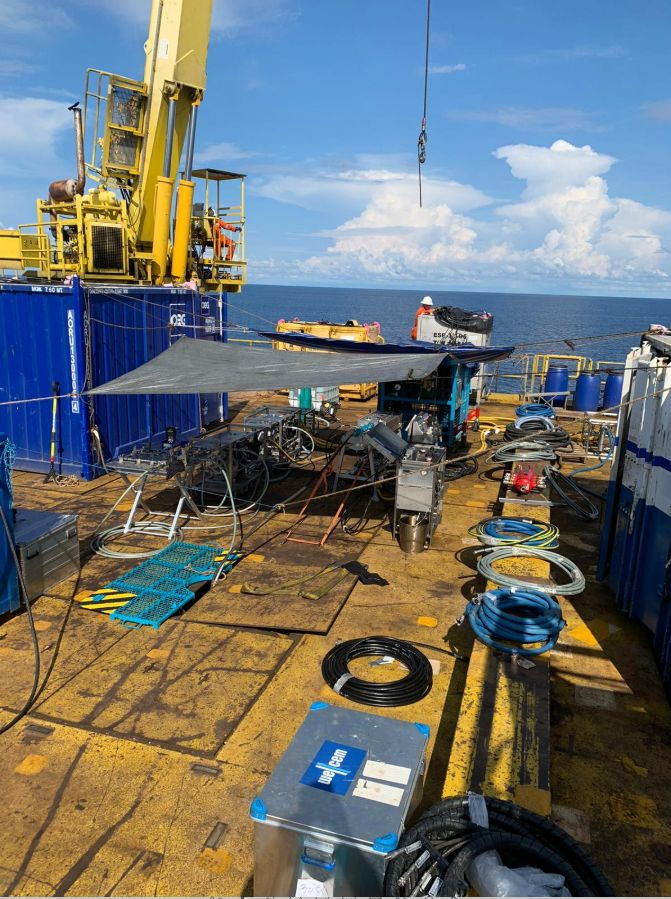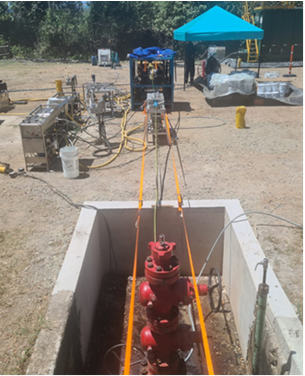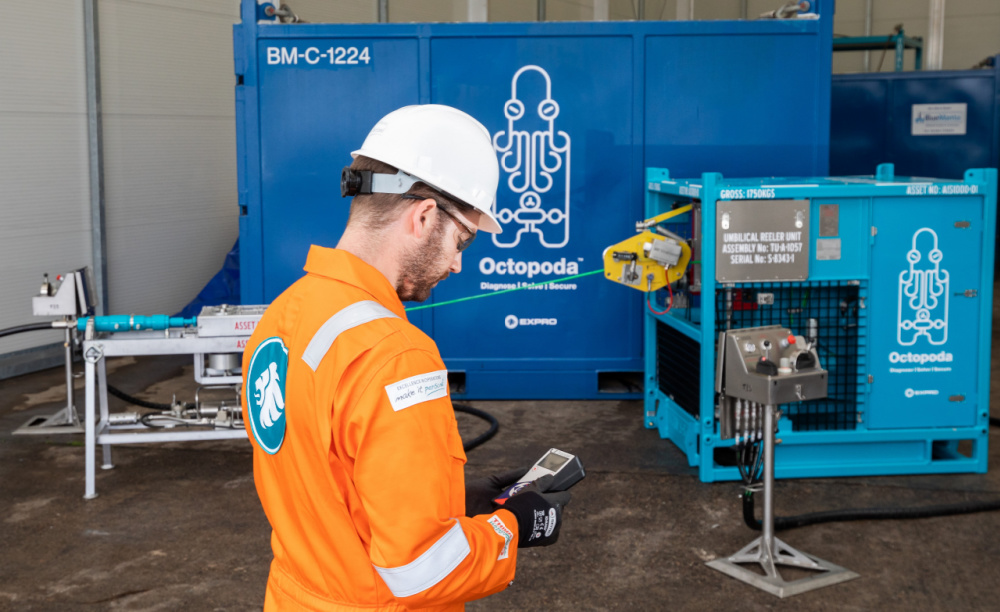An annular well intervention solution is gaining traction as a means for operators to repair leaks and delay plugging a well.
Repairing leaks in a pressurized annulus has been problematic, but one solution is able to pass a wellhead and run into the annual bore to allow leak remediation, fluid displacement and resin placement.
Expro’s Octopoda tool, deployed on more than a dozen projects, is intended to help operators economically regain their wells. In one recent deployment, the tool intervened to allow an inspection that gave an operator the information needed to decide whether to carry out a slot recovery on a well.
Dave Bowman, Expro’s vice president for business development, says the tool addresses the big issue of sustained casing pressure and cement leaks.
“There has never been really a way of getting into annulus to control those leaks,” he said.
Lee Kazmierczak, senior global product service line manager for well intervention and integrity at Expro, said conventional methods for remediating sustained casing pressure typically require extensive crewing and can require the use of a rig. Further, he said, the “ways to solve the problems were very basic and would either work or not work.”

The Octopoda, he said, offers some assurance that the issues operators are seeing with an annulus are resolved.
The Octopoda system is able to get past the wellhead architecture, Bowman said.
“They were never built or designed to allow things to run past them,” he said.
The system is designed to be placed on a platform with restricted deck space and limited crane capacity, Kazmierczak said. The annulus intervention hose is fed through the injector system and into a flexible pressure-retaining lubricator before being attached to the wellhead through Expro’s WellSpring system. At depth, the Octopoda can inject resins or gels to seal the leak and can conduct a fluid swap out, he said.

According to Expro, to be able to diagnose the leaks through technologies such as Expro’s digital fiber optic slickline and then remediate with either the introduction of weighted fluid or gels or resins gives the operator some assurance of making the most use of the chemical at the required depth to fix the integrity issues and return the well to a safe producing state.
“The ability to get into the well, intervene in it, and swap chemicals at depth is completely new to the industry and the operators,” he said. “It lets them intervene in a pressurized annulus.”
When Kazmierczak first heard of the process, he was “genuinely excited” about the technology. A “well intervention guy at heart,” he said the approach is “completely different to what we’re used to in the oil and gas industry.”
He was involved in Expro’s 2019 acquisition of Qi, which developed the technology.
“For me, it was absolutely a bit of a wow factor. It was completely off the wall, different. It solves so many problems,” Kazmierczak said.
Following the 2019 acquisition of Qi and the Octopoda technology, Expro deployed the system in the Norwegian market first. Subsequent jobs have been in the U.K., South East Asia and South America.
One thing the system does is make it possible to intervene in leak situations with sustained casing pressure where loss of production may mean the operator needs to workover the well or plug and abandon (P&A) it, Kazmierczak said.
“The cost could be quite extensive for that kind of remediation” with conventional systems, he said.
Part of that cost is the remediation work itself. Part of that is the loss of production while the well is offline.
“Octopoda provides an alternative to that. With its low footprint, low personnel on board and quick remediation, it allows them to get that well back online,” Kazmierczak said.

In short, he said, the system makes it possible for operators to effectively prolong an asset’s life and delay P&A by several years.
And for one operator, Expro deployed Octopoda to “inspect the conductor pipe for the end result of looking to refrain from full slot recovery of a well,” he said.
The job called for intervening in the conductor and carrying out a detailed camera inspection and a wall thickness check on the conductor “with a view to life extension of the well,” he added.
The measurements and photographs made it possible for the operator to “make a pretty huge decision with regards to what to do with that particular well. They refrained from slot recovery,” he said. “We gathered enough data to allow them to make that decision. They wouldn’t have been able to do that conventionally previously.”
Recommended Reading
Exxon CEO Darren Woods: Hydrogen Incentives ‘Critical’ for Now
2025-02-03 - Exxon Mobil CEO Darren Woods said the end goal for energy policy should be a system in which no fuel source remains dependent on government subsidies.
Congress Kills Biden Era Methane Fee on Oil, Gas Producers
2025-02-28 - The methane fee was mandated by the 2022 Inflation Reduction Act, which directed the EPA to set a charge on methane emissions for facilities that emit more than 25,000 tons per year of CO2e.
Report: Trump to Declare 'National Energy Emergency'
2025-01-20 - President-elect Donald Trump will also sign an executive order focused on Alaska, an incoming White House official said.
Pioneer to Adapt Emvolon’s Flare Gas-to-Methanol Tech
2025-01-13 - The Department of Energy awarded Pioneer Energy $6 million to demonstrate the technology at an oil and gas facility in the Eagle Ford Shale for 12 months.
Industry Players Get Laser Focused on Emissions Reduction
2025-01-16 - Faced with progressively stringent requirements, companies are seeking methane monitoring technologies that make compliance easier.
Comments
Add new comment
This conversation is moderated according to Hart Energy community rules. Please read the rules before joining the discussion. If you’re experiencing any technical problems, please contact our customer care team.




